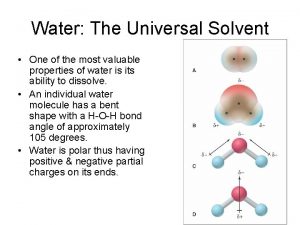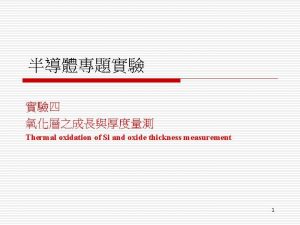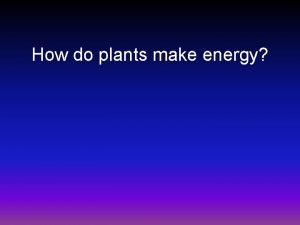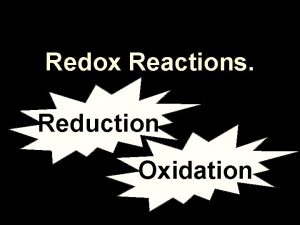Oxidation Is Loss of electrons Reduction Is Gain


- Slides: 2

Oxidation Is Loss (of electrons) Reduction Is Gain (of electrons) Ionic half equations (HT only) For displacement reactions Ionic half equations show what happens to each of the reactants during reactions Acid name Salt name Hydrochloric acid Chloride Sulfuric acid Sulfate Nitric acid HT ONLY: Reactions between metals and acids are redox reactions as the metal donates electrons to the hydrogen ions. This displaces hydrogen as a gas while the metal ions are left in the solution. Reactions with acids For example: The ionic equation for the reaction between iron and copper (II) ions is: Fe + Cu 2+ Fe 2+ + Cu metal + acid metal salt + hydrogen Acids react with some metals to produce salts and hydrogen. The half-equation for iron (II) is: Fe 2+ + 2 e- Reactions of acids and metals The half-equation for copper (II) ions is: Cu 2+ + 2 e- Cu Reactions of acids Oxidation and reduction in terms of electrons (HT ONLY) Neutralisation of acids and salt production Reactivity of metals calcium carbonate + sulfuric acid calcium sulfate, + carbon dioxide + water Neutralisation The reactivity series Metal oxides Metals and oxygen Metals react with oxygen to form metal oxides magnesium + oxygen magnesium oxide 2 Mg + O 2 2 Mg. O Reduction This is when oxygen is removed from a compound during a reaction e. g. metal oxides reacting with hydrogen, extracting low reactivity metals Oxidation This is when oxygen is gained by a compound during a reaction Extraction using carbon Metals less reactive than carbon can be extracted from their oxides by reduction. Extraction of metals and reduction Group 1 metals Group 2 metals sodium hydroxide + hydrochloric acid sodium chloride + water An alkali is a soluble base e. g. metal hydroxide. A base is a substance that neutralises an acid e. g. a soluble metal hydroxide or a metal oxide. zinc + sulfuric acid zinc sulfate + hydrogen AQA Chemical Changes 1 Nitrate Acids can be neutralised by alkalis and bases magnesium + hydrochloric acid magnesium chloride + hydrogen e. g. metals reacting with oxygen, rusting of iron Zinc, iron and copper For example: zinc oxide + carbon zinc + carbon dioxide Unreactive metals, such as gold, are found in the Earth as the metal itself. They can be mined from the ground. Reactions with water Reactions with acid Reactions get more vigorous as you go down the group Do not react with water Observable reactions include fizzing and temperature increases Do not react with water Zinc and iron react slowly with acid. Copper does not react with acid. Metals form positive ions when they react The reactivity of a metal is related to its tendency to form positive ions The reactivity series arranges metals in order of their reactivity (their tendency to form positive ions). Carbon and hydrogen are non-metals but are included in the reactivity series These two non-metals are included in the reactivity series as they can be used to extract some metals from their ores, depending on their reactivity. Displacement A more reactive metal can displace a less reactive metal from a compound. better hope – brighter future Silver nitrate + Sodium chloride Sodium nitrate + Silver chloride

At the negative electrode Metal will be produced on the electrode if it is less reactive than hydrogen. Hydrogen will be produced if the metal is more reactive than hydrogen. At the positive electrode Oxygen is formed at positive electrode. If you have a halide ion (Cl-, I-, Br-) then you will get chlorine, bromine or iodine formed at that electrode. Process of electrolysis Splitting up using electricity When an ionic compound is melted or dissolved in water, the ions are free to move. These are then able to conduct electricity and are called electrolytes. Passing an electric current though electrolytes causes the ions to move to the electrodes. Electrode Anode Cathode The positive electrode is called the anode. The negative electrode is called the cathode. Where do the ions go? Cations Anions Cations are positive ions and they move to the negative cathode. Anions are negative ions and they move to the positive anode. Electrolysis of aqueous solutions Completely ionised in aqueous solutions e. g. hydrochloric, nitric and sulfuric acids. Weak acids Only partially ionised in aqueous solutions e. g. ethanoic acid, citric acid. Hydrogen ion concentration As the p. H decreases by one unit (becoming a stronger acid), the hydrogen ion concentration increases by a factor of 10. Add the solid to the acid until no more dissolves. Filter off excess solid and then crystallise to produce solid salts. You can use universal indicator or a p. H probe to measure the acidity or alkalinity of a solution against the p. H scale. In neutralisation reactions, hydrogen ions react with hydroxide ions to produce water: H+ + OH- H 2 O Acids produce hydrogen ions (H+) in aqueous solutions. Alkalis Aqueous solutions of alkalis contain hydroxide ions (OH -). This process is used when the metal is too reactive to be extracted by reduction with carbon. The process is expensive due to large amounts of energy needed to produce the electrical current. Example: aluminium is extracted in this way. 1. Use the pipette to add 25 cm 3 of alkali to a conical flask and add a few drops of indicator. Titrations (Chemistry only) Titrations are used to work out the precise volumes of acid and alkali solutions that react with each other. The p. H scale and neutralisation Production of soluble salts Reactions of acids Metals can be extracted from molten compounds using electrolysis. Higher tier: You can display what is happening at each electrode using half-equations: At the cathode: Pb 2+ + 2 e- Pb At the anode: 2 Br- Br 2 + 2 e- AQA Chemical Changes 2 Soluble salts can be made from reacting acids with solid insoluble substances (e. g. metals, metal oxides, hydroxides and carbonates). Strong and weak acids (HT ONLY) Strong acids Extracting metals using electrolysis The ions discharged when an aqueous solution is electrolysed using inert electrodes depend on the relative reactivity of the elements involved. 2. Fill the burette with acid and note the starting volume. Slowly add the acid from the burette to the alkali in the conical flask, swirling to mix. 3. Stop adding the acid when the end-point is reached (the appropriate colour change in the indicator happens). Note the final volume reading. Repeat steps 1 to 3 until you get consistent readings. Calculating the chemical quantities in titrations involving concentrations in mol/dm 3 and in g/dm 3 (HT ONLY): 2 Na. OH(aq) + H 2 SO 4(aq)→ Na 2 S 04(aq) + 2 H 2 O(l) It takes 12. 20 cm 3 of sulfuric acid to neutralise 24. 00 cm 3 of sodium hydroxide solution, which has a concentration of 0. 50 mol/dm 3. Calculate the concentration of the sulfuric acid in g/dm 3 0. 5 mol/dm 3 x (24/1000) dm 3 = 0. 012 mol of Na. OH better hope – brighter future The equation shows that 2 mol of Na. OH reacts with 1 mol of H 2 SO 4, so the number of moles in 12. 20 cm 3 of sulfuric acid is (0. 012/2) = 0. 006 mol of sulfuric acid Calculate the concentration of sulfuric acid in mol/ dm 3 0. 006 mol x (1000/12. 2) dm 3 =0. 49 mol/dm 3 Calculate the concentration of sulfuric acid in g/ dm 3 H 2 SO 4 = (2 x 1) + 32 + (4 x 16) = 98 g 0. 49 x 98 g = 48. 2 g/dm 3



